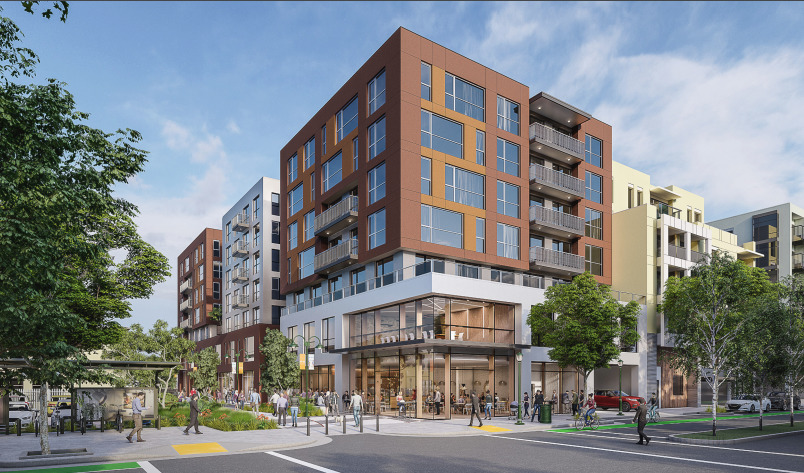Project Overview
METRO is working with the community to make transit faster, more reliable, and more accessible between the cities of Watsonville and Santa Cruz.
Funded by a Caltrans Sustainable Transportation Planning Grant in 2022, the Rapid Corridors Study identified route, bus stop and roadway improvements that will reduce travel time on the Route 1 and 2 corridors by up to 40%. When implemented, these changes would double the number of Santa Cruz County residents living within a quarter mile of a high-quality bus stop.
The study also recommends numerous pedestrian and bicycle safety improvements, including boarding islands that separate bicycle and bus traffic, expanded boarding areas, and enhanced pedestrian crossings.
Implementing the strategies is estimated to cost $24.1 million. METRO was awarded $7.5 million for rapid bus upgrades through the Transit and Intercity Rail Capital Program (TIRCP) Cycle 6. We are seeking additional funding through joint applications with the Santa Cruz County Regional Transportation Commission (SCCRTC) to fully fund the Watsonville – Santa Cruz Multimodal Corridor Program. Opportunities to implement additional improvements as part of other upcoming projects, such as the Pacific Station Redevelopment, are also being explored.
Project Objectives
- Engage community members to understand needs and opportunities for improved transit service, amenities, and bicycle and pedestrian facilities.
- Evaluate traffic and travel conditions along the corridor to identify potential transit priority improvements, bus stop amenities, and pedestrian and bicycle facilities.
- Develop strategies and solutions for improving transit service and access.
- Coordinate with local jurisdictions and key stakeholders to identify steps to implementation.
Possible Improvement Options
Consolidate & Relocate Bus Stops
Relocate, add, and remove stops to achieve a 1/3-mile stop spacing. Place stops to improve stop accessibility and safety.
- Relocates/adds/removes stops to lower overall trip time and provide better bus stop coverage.
- Removes closely spaced or low ridership stops to reduce time at stops and
- Increases spacing between stops to lower overall trip time.
Enhance Bus Stop Amenities
Install additional bus stop amenities, such as shelters, benches, and lighting, to improve comfort and safety of riders.
- Installs additional bus stop amenities to improve the comfort and safety of riders.
- Amenities may include bus shelters, benches, pedestrian-scale lighting, trash cans, wayfinding, branding, transit information signage, bike racks, and sidewalk improvements.
Install Bus Bulbs & Transit Islands
Install bus bulbs and transit islands to allows buses to stop in-lane, removing the need to pull out of traffic to the curb and avoiding the need to wait for a gap in traffic to depart from the bus stop. Where stops are adjacent to bike lanes and space allows, provide a transit island to allow the bikes to travel behind the stop, eliminating bus-bike conflicts
- Extends the curb into the roadway, closer to the traffic lane, so buses are not delayed by traffic when departing the bus stop.
- Provides a transit waiting area separate from the sidewalk and additional space for transit amenities.
- Transit Islands allow for a protected bike lane which eliminates conflict between bikes and buses at stops.
Transit Signal Priority (TSP)
Technologies used to reduce transit vehicle delays at signalized intersections. Examples include holding lights green for a few seconds, if needed to allow a bus to pass through before the light turns red, and turning the light green a few seconds earlier to reduce the wait time at red lights.
- Technologies used to reduce transit vehicle delays at signalized intersections.
- Examples include holding lights green for a few seconds until the bus can pass through to reduce its wait time
Enhance Pedestrian Crossings
Install Rectangular Rapid Flashing Beacons (RRFBs), Pedestrian Hybrid Beacons (PHBs), and high-visibility crosswalks to increase yielding of vehicles to pedestrians and enhance pedestrian safety around bus stops.
Queue Jumps
A queue jump lane is a travel lane at traffic signals that is specially marked or signed for transit vehicles and allows buses to get ahead of the traffic queue at the signal.
- Modifies lane geometry and signal operations to provide transit priority treatments.
Bus-Only Lanes and Shared Bus/Bike Lanes
Bus-only lanes and shared bus/bike lanes are lanes restricted for use by buses and bikes only and are used to separate buses and bikes from traffic congestion.
Road & Intersection Reconfiguration
- Modify lane and intersection geometry and signal operations to optimize transit movements.
- Reconfigures Water Street/Soquel Avenue/Morrissey Boulevard intersection to optimize transit movements.
- Installs bus and bike lanes on Front Street and River Street.
- Modifies lane geometry and signal operations to provide transit priority treatments on westbound Soquel Drive approaching Porter Street and Main Street.
- Installs traffic signal and provides transit signal priority at the intersection of Lincoln Street and Freedom Boulevard to accommodate bus turns.
Project Resources
Fact Sheets
Bus Bulbs & Transit Islands (Eng/Span)
Relocations & Consolidation of Rapid Bus Stops (Eng/Span)
Pedestrian Crossings (Eng/Span)
Downtown Santa Cruz Front Street & River Street Transit Lane (Eng/Span)
Water, Soquel & Morrissey Intersection Improvements (Eng/Span)
Freedom Boulevard & Lincoln Street Traffic Signal (Eng/Span)
